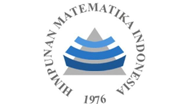Comparison of User Satisfaction of Mobile-Based Document Scanner Applications on Camscanner and Simple Scanner Using the TAM Method
Abstract
Keywords
Full Text:
PDFReferences
K. Iyengar, G. K. Upadhyaya, R. Vaishya, and V. Jain, “COVID-19 and applications of smartphone technology in the current pandemic,” Diabetes Metab. Syndr. Clin. Res. Rev., vol. 14, no. 5, pp. 733–737, 2020. https://doi.org/10.1016/j.dsx.2020.05.033
B. Hunt, A. J. Ruiz, and B. W. Pogue, “Smartphone-based imaging systems for medical applications: a critical review,” J. Biomed. Opt., vol. 26, no. 4, p. 40902, 2021. https://doi.org/10.1117/1.JBO.26.4.040902
A. N. Hakim and L. Yulia, “Dampak teknologi digital terhadap pendidikan saat ini,” J. Pendidik. Sos. Dan Hum., vol. 3, no. 1, pp. 145–163, 2024. https://publisherqu.com/index.php/pediaqu/article/view/800
P. Tirodkar, H. Malgundkar, S. Ghadi, and A. Save, “Buddy Scanner–A Scanning Application,” in 2021 2nd International Conference for Emerging Technology (INCET), IEEE, 2021, pp. 1–9. https://doi.org/10.1109/INCET51464.2021.9456316
S. Z. Lutfiah, M. A. Komara, and D. Irmayanti, “Analisis Kesuksesan Aplikasi Camscanner Dengan Pendekatan Model Delone And Mclean Studi Kasus Stt Wastukancana Purwakarta Dan Stie Wikara Purwakarta,” J. Inform. Teknol. dan Sains, vol. 5, no. 4, pp. 643–648, 2023. https://doi.org/10.51401/jinteks.v5i4.3276
R. Sholihah and A. D. Indriyanti, “Analisis Kepuasan Pengguna Aplikasi Camscanner Menggunakan Metode Technology Acceptance Model (TAM) dan End-User Computing Satisfaction (EUCS),” J. Emerg. Inf. Syst. Bus. Intell., vol. 3, no. 3, pp. 102–109, 2022. https://doi.org/10.26740/jeisbi.v3i3.47236
S. Aminah and J. N. Utamajaya, “Pengukuran Kepuasan Pengguna Aplikasi Camscanner Menggunakan Metode End-User Computing Satisfaction (EUCS),” KLIK Kaji. Ilm. Inform. dan Komput, vol. 3, no. 4, pp. 347–354, 2023. https://doi.org/10.26740/jeisbi.v3i3.47236
B. Y. Prayoga, “Usability Analysis Of Camscanner Applications Using The System Usability Scale (SUS) Method,” J. Perangkat Lunak, vol. 5, no. 2, pp. 177–186, 2023. https://doi.org/10.32520/jupel.v5i2.2616
S. R. Natasia, Y. T. Wiranti, and A. Parastika, “Acceptance analysis of NUADU as e-learning platform using the Technology Acceptance Model (TAM) approach,” Procedia Comput. Sci., vol. 197, pp. 512–520, 2022. https://doi.org/10.1016/j.procs.2021.12.168
E. Lusiana, “Penerapan Model Pembelajaran Discovery Learning Untuk Meningkatkan Hasil Belajar Siswa Dalam Materi Menganalisis Alur, Babak, Dan Konflik Dalam Drama Di Kelas Xi Mia 1 Sma Cahaya Medan Tp 2020/2021,” Quaerite Verit. J. Pendidik., vol. 1, no. 2, pp. 55–63, 2022. https://doi.org/10.53842/qvj.v1i2.11
U. M. A. Harahap, I. Pohan, and S. Ramadan, “Analisis Kepuasan Pengguna Aplikasi Mobile Banking Sumut Menggunakan Metode TAM,” J. Teknol. Sist. Inf. dan Sist. Komput. TGD, vol. 7, no. 2, pp. 257–264, 2024. https://ojs.trigunadharma.ac.id/index.php/jsk/index
A. T. To and T. H. M. Trinh, “Understanding behavioral intention to use mobile wallets in vietnam: Extending the tam model with trust and enjoyment,” Cogent Bus. Manag., vol. 8, no. 1, p. 1891661, 2021. https://doi.org/10.1080/23311975.2021.1891661
D. I. Prastiawan, S. Aisjah, and R. Rofiaty, “The effect of perceived usefulness, perceived ease of use, and social influence on the use of mobile banking through the mediation of attitude toward use,” APMBA (Asia Pacific Manag. Bus. Appl., vol. 9, no. 3, pp. 243–260, 2021. https://doi.org/10.21776/ub.apmba.2021.009.03.4
K. Keni, “How perceived usefulness and perceived ease of use affecting intent to repurchase?,” J. Manaj., vol. 24, no. 3, pp. 481–496, 2020. https://doi.org/10.24912/jm.v24i3.680
W. M. Al-Rahmi, N. Yahaya, M. M. Alamri, I. Y. Alyoussef, A. M. Al-Rahmi, and Y. Bin Kamin, “Integrating innovation diffusion theory with technology acceptance model: Supporting students’ attitude towards using a massive open online courses (MOOCs) systems,” Interact. Learn. Environ., vol. 29, no. 8, pp. 1380–1392, 2021. https://doi.org/10.1080/10494820.2019.1629599
E. Unal and A. M. Uzun, “Understanding university students’ behavioral intention to use Edmodo through the lens of an extended technology acceptance model,” Br. J. Educ. Technol., vol. 52, no. 2, pp. 619–637, 2021. https://doi.org/10.1111/bjet.13046
E. Hermawan, D. Tricahyono, and E. Witjara, “An Analysis of E-Voting Adoption Using the Technology Acceptance Model (TAM) in the Simultaneous Village Head Elections in Sleman Regency,” Blantika Multidiscip. J., vol. 3, no. 9, pp. 1286–1301, 2025. https://doi.org/10.57096/blantika.v3i9.406
W.-H. Cheah, N. M. Jusoh, M. M. T. Aung, A. Ab Ghani, and H. M. A. Rebuan, “Mobile technology in medicine: development and validation of an adapted system usability scale (SUS) questionnaire and modified technology acceptance model (TAM) to evaluate user experience and acceptability of a mobile application in MRI safety screening,” Indian J. Radiol. Imaging, vol. 33, no. 01, pp. 36–45, 2023. 10.1055/s-0042-1758198
A. Triananda and N. Handayani, “Determinan Penggunaan Software Dengan Pendekatan Technology Acceptance Model (Tam): Studi Empiris Pada Mahasiswa S1 Akuntansi Stiesia,” J. Ilmu dan Ris. Akunt., vol. 12, no. 8, 2023. https://jurnalmahasiswa.stiesia.ac.id/index.php/jira/article/view/5463
D. Legramante, A. Azevedo, and J. M. Azevedo, “Integration of the technology acceptance model and the information systems success model in the analysis of Moodle’s satisfaction and continuity of use,” Int. J. Inf. Learn. Technol., vol. 40, no. 5, pp. 467–484, 2023. https://doi.org/10.1108/IJILT-12-2022-0231
A. Henzi, M. Puke, T. Dimitriadis, and J. Ziegel, “A safe Hosmer-Lemeshow test,” arXiv Prepr. arXiv2203.00426, 2022. https://doi.org/10.48550/arXiv.2203.00426
F. P. N. Koten, A. Jufriansah, and H. Hikmatiar, “Analisis penggunaan aplikasi Whatsapp sebagai media informasi dalam pembelajaran: Literature review,” J. Ilmu Pendidik. STKIP Kusuma Negara, vol. 14, no. 1, pp. 72–84, 2022. https://doi.org/10.37640/jip.v14i1.1409
A. T. Jebb, V. Ng, and L. Tay, “A review of key Likert scale development advances: 1995–2019,” Front. Psychol., vol. 12, p. 637547, 2021. https://doi.org/10.3389/fpsyg.2021.637547
I. Kurniasih and D. Pibriana, “Pengaruh Kepuasan Pengguna Aplikasi Belanja Online Berbasis Mobile Menggunakan Metode EUCS,” JATISI (Jurnal Tek. Inform. Dan Sist. Informasi), vol. 8, no. 1, pp. 181–198, 2021. https://doi.org/10.35957/jatisi.v8i1.787
I. Ahmed and S. Ishtiaq, “Reliability and validity: importance in medical research,” Methods, vol. 12, no. 1, pp. 2401–2406, 2021. https://doi.org/10.47391/jpma.06-861
DOI: http://dx.doi.org/10.30829/zero.v9i2.26063
Refbacks
- There are currently no refbacks.

This work is licensed under a Creative Commons Attribution-ShareAlike 4.0 International License.
Publisher : Department of Mathematics Faculty of Science and Technology Universitas Islam Negeri Sumatera Utara Medan | |
✉️ Email: zero_journal@uinsu.ac.id 📱 WhatsApp:085270009767 (Admin Official) | |
 |  |  |  |  |



